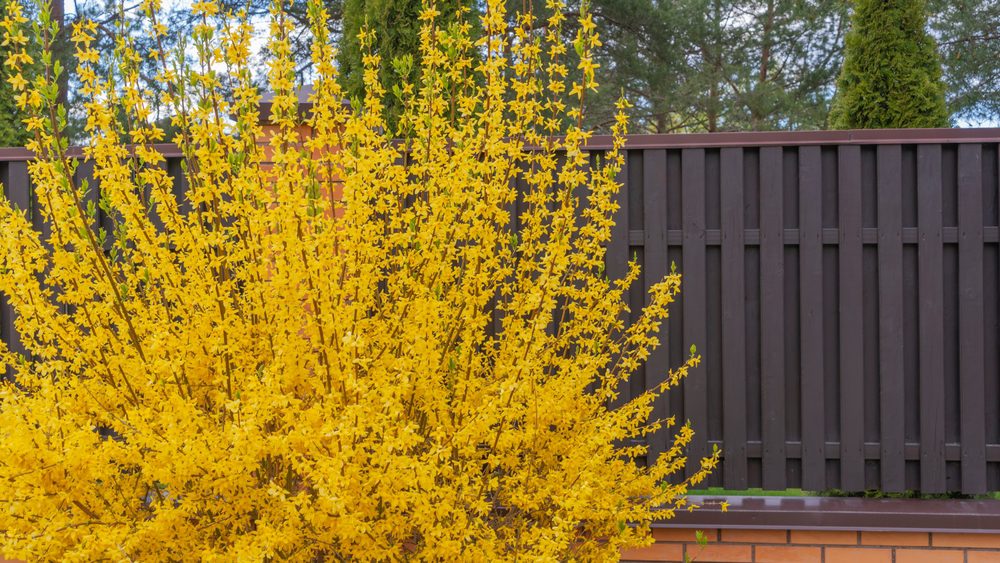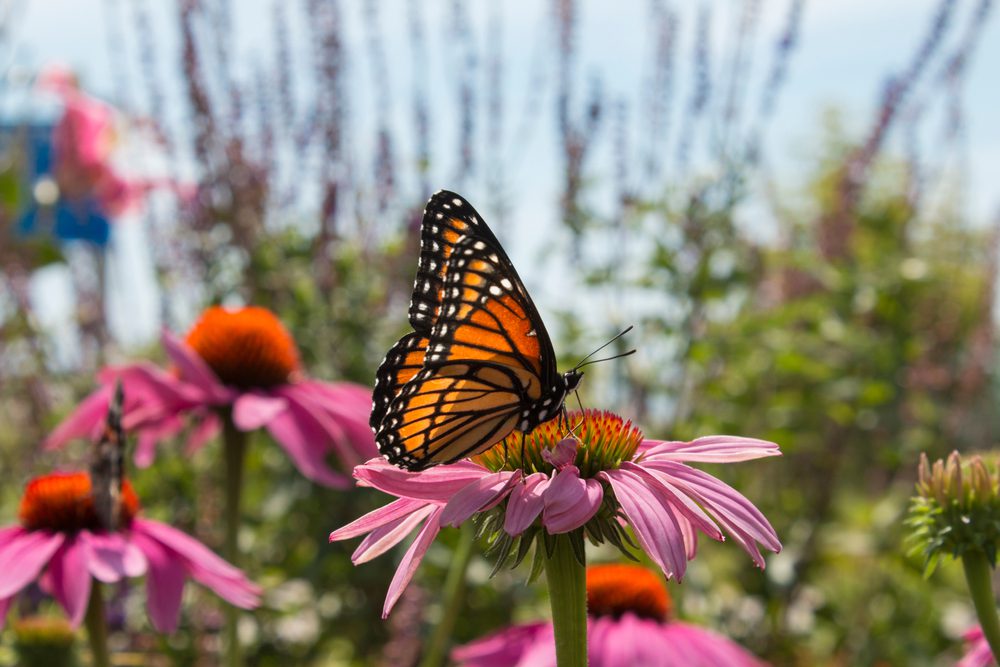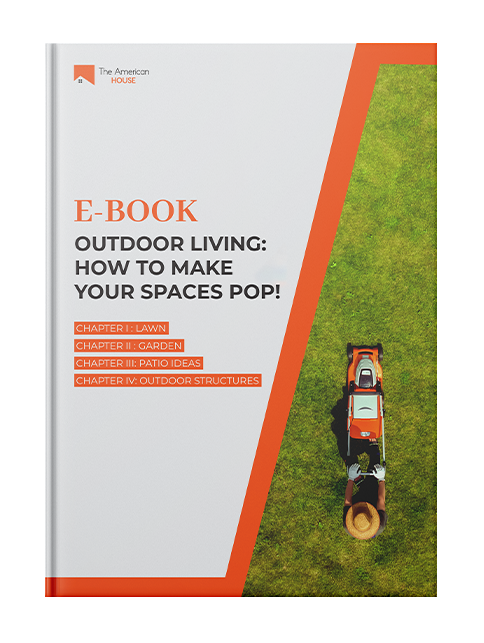If you have your own garden at home, then you might know how hard it can be to maintain it healthy and vibrant. While some prefer having a formal garden, with a clear structure and perfect geometric shapes, others are more into a natural garden style with no lines or smooth surfaces. Either way, having a garden can be pretty challenging if you’re the one who takes care of it.
But let me tell you something. You can have a breathtaking garden with almost NO upkeep! The secret is to just choose plants that grow under any conditions. Having these kinds of plants in your garden will make your life easier as you won’t worry every time the temperature gets too high or too low.
We have a list of 10 beautiful plants that grow under any conditions so get ready to find some new ideas for your garden!

1. Oriental Lily
Give your garden an exotic style with these stunning flowers that will definitely indulge your senses. Oriental lilies are richly scented flowers and easy to grow from bulbs planted in the spring or fall.
They usually start blooming in late summer to early fall and the blooms range from orange and yellow, to pink and white. You won’t have to worry about them as oriental lilies are plants that grow under any conditions.
Some taller varieties may need support in windy areas, so consider setting stakes in the ground while the plants are young. To avoid staining your clothes, remove the stamens from the exquisite blooms before cutting them. To keep the plant healthy and vigorous, dig and divide the bulbs every few years in the fall.
2. Coral Honeysuckle
Coral honeysuckle blooms in coral, orange, red, or yellow trumpet-shaped flowers. It can be grown as a vine, shrub, or ground cover, but no matter how you cultivate it, coral honeysuckles will reward your minimal efforts.
If you’re looking for a reliable plant that can beautifully decorate your garden, then coral honeysuckles are a good bet. These plants require little maintenance and are easy to care for because they are adaptable to various environments.
Hummingbirds and butterflies simply love the coral honeysuckle flowers and its red berries in fall attract songbirds. So if you want to turn your garden into your own little paradise, then these flowers are your way to go!
3. Peony
Not only will you have some splendid flowers in your garden, but you’ll also make a long-term investment by buying these plants that grow under any conditions. Peony flowers will bloom year after year for decades. And do you want to know something even more wonderful? Peony flowers are getting bigger and better every year!
They came in various vibrant colors like pink, white, orange, red, and yellow. Also, peonies can have different flower forms such as singles, doubles, and semi-doubles. But here’s another thing: they smell delightful, making them an excellent choice for fresh-cut bouquets. Most peonies bloom in May and June, but even after they have finished blooming, they still make your garden stand out.
By the way, you’ll also need a garden shovel to plant your peonies!

4. Black-Eyed Susan
If you want to have flowers all summer long in your garden, then black-eyed Susan is your way to go. A wildflower native to North America, it can easily win a “best hardy flowers” contest. Why? Because it’s heat-resistant, drought-tolerant, and self-seeding. The only job you have to do when it comes to these plants that grow under any conditions is to deadhead those spent flowers to let others bloom.
Butterflies, bees, and other pollinators are attracted to the bright yellow buds. They drink the nectar and fly from one plant to another, making it to grow seeds that can travel freely with the wind. The black-eyed Susan flowers also attract rabbits and deer, so consider planting them close to a pest-resistant plant to deter wildlife.
5. Hellebore
If you want to have blooming flowers even in the cold season, then you must plant some hellebores in your garden. Commonly known as Lenten or Christmas rose, hellebores bloom as early as January and last pretty well into spring.
They exceed expectations as perennial flowers for their colors like white, yellow, purple, pink, and green. Having bicolored or spotted blooms, hellebores are easily eye-catching.
They also bring texture to your garden and have glossy green foliage all year. You can plant hellebores close to spring-flowering bulbs like Narcissus and Scilla as they turn out to be perfect partners.
If your garden is often visited by uninvited guests, don’t worry. Hellebores are rabit and deer resistant.
6. Coneflower
Autumn brings so many shades of orange and brown with it. But what about having blooming flowers during the fall? Coneflowers are also plants that grow under any conditions. By far the most commonly cultivated perennials in the country, they have a long flowering season from June through September.
Though pinkish-purple may be the most popular color, there are over 20 varieties of coneflowers from which to choose for your garden. From vibrant orange and red to white and green, you can also plant coneflowers with double blooms (keep in mind that pollinators are not very interested in this hybrid petal-heavy variety).
Coneflowers are normally low maintenance. Besides, they are also humidity and heat tolerant. Just make sure you grow them in a sunny spot and on well-drained soil.
7. Cranesbill
Easy to grow, heat and cold-resistant, and low-maintenance, cranesbills – also known as hardy geraniums – are one of the most popular garden perennials and also plants that grow under any conditions.
From late spring to fall, cranesbills produce pink, blue, magenta, white, or light purple flowers on thin, arching stems. When in bloom, flowers are generally quite tiny, but they grow in such abundance that they almost cover nearby plants.
Many varieties of cranesbill have foliage that’s very visually pleasing on its own, with multiple colors and veining botching. Furthermore, because many grow slowly, their thick carpet-like foliage makes them ideal ground cover plants.
Cranesbills need well-drained, fertile and moist soil. They also do best in full sun, partial shade and even dense shade.

8. Forsythia
When the golden blooms of this plant appear in the early days of spring, you know that warm weather is on its way. Maybe you didn’t know its name, but surely you saw this breathtaking plant somewhere. While its flowers don’t resist more than two or three weeks, this plant still has some strengths and can serve some useful functions in your garden.
Forsythia awakens from its dormant winter state when the weather gets warmer, making it a remarkable addition to your garden. This shrub is easy to grow and it’s able to adapt well to a variety of conditions
TIP: Put it in a sunny spot with well-drained, moist soil for the best spring blooms.
9. Clematis
If you’re interested in having clematis in your garden, hold tight because there are MORE than 300 species and hundreds of hybrids of this plant! Small-flowering varieties have more blossoms that last longer than larger ones and you can also find scented varieties. Some varieties are trailing types, while others are shrubs or vines.
Some clematis types bloom in spring, while others bloom in late August to early September. For a wonderful garden with colorful flowers blooming throughout the year, choose the right clematis varieties. Grow them in moist, well-drained soil and in a sunny spot. If you live in a hotter climate, consider planting them in a place that is, or can be, shaded and cool.
10. Sedum
If you’re looking for a low-maintenance perennial, sedums should be at the top of your list. These tough plants that grow under any conditions come in a variety of shapes, sizes, and colors and are resistant to heat, drought, winter cold, and insects. The most popular variety is called Dragon’s Blood sedum.
They are ideal for areas in your garden where you don’t know what to grow because there is too much sun or too little water. When it comes to sedum, you don’t have to worry about these kinds of things. Having a pretty red-and-green foliage, this fast-growing creeper makes it the perfect groundcover for sloping areas.
If you enjoyed reading this article, we also recommend reading: 15 Amazing Secrets Gardeners Won’t Tell You.





